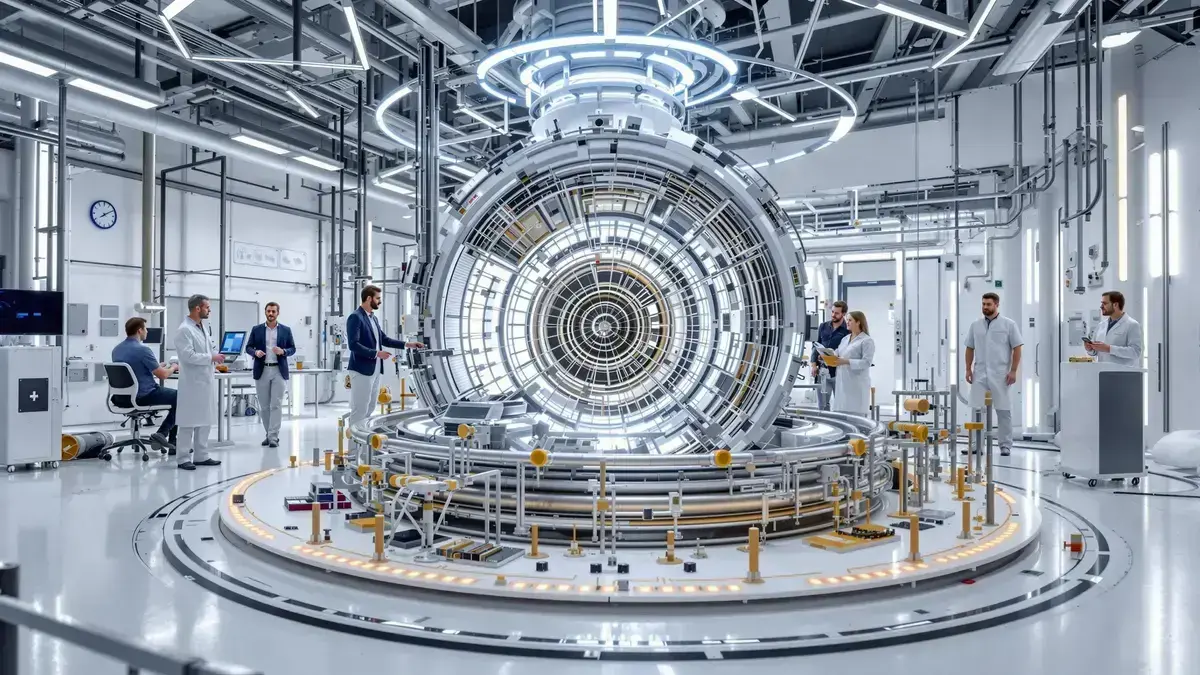Germany is making a turning point in energy with the presentation of an innovative nuclear reactor. Proxima Fusion is unveiling a stellarator at a commercial level, promising clean and sustainable fusion energy. Supported by the European Union and the German government, this project utilizes superconductors to create more compact reactors. The open-source design encourages global collaboration, while the construction of a test facility, named Alpha, is planned for 2031.
Key Information
- Germany presents an innovative nuclear reactor with Proxima Fusion.
- The Stellaris project aims for clean fusion energy and sustainability.
- An open-source design to promote global collaboration.
- A test facility is planned for 2031, with a monumental impact on carbon emissions.
A Revolutionary Nuclear Reactor in Germany
Germany recently unveiled an innovative nuclear reactor that could transform the global energy landscape. This ambitious project, supported by the European Union and the German government, marks a significant step toward clean and sustainable fusion energy. Germany’s role in the development of fusion technologies could redefine the energy production future for various countries.
Proxima Fusion and the Commercial Stellarator
Proxima Fusion has presented a commercial-level stellarator, a solution that distinguishes itself from traditional fusion technologies such as tokamaks. Unlike tokamaks, which require operational interruptions, stellarators function continuously and safely, providing enhanced operational stability. This approach could revolutionize energy efficiency in the coming years.
A Fast Design Protocol
The design of this reactor is part of a fast design protocol, which can shorten the development time to one year instead of two. This technological advance is expected to accelerate the implementation of innovations in fusion energy. With such a pace, future projects could hasten, facilitating a quick transition to sustainable energy sources.
Use of Superconductors
The reactor also utilizes superconductors, making the reactors more compact and efficient. This technical feature is essential for reducing the construction and operational costs of fusion facilities. By optimizing space and resources, these reactors are positioned as a relevant solution for future energy supply.
Open-source Design: A Collaboration Model
The open-source design of the stellarator promotes global collaboration, enabling researchers and companies from around the world to contribute to the development of this revolutionary technology. This collaborative approach could accelerate innovation and foster new ideas that further improve the efficiency and safety of fusion reactors.
The Benefits of Stellarators
Stellarators not only offer sustainability but also have less demanding operational requirements. Their continuous operation reduces maintenance issues and ensures more reliable energy production. This represents a fundamental shift from previous technologies and embodies significant potential for the future of energy.
The Stellaris Project and Its Impact on Carbon Emissions
The reactor project, nicknamed Stellaris, promises energy production without carbon or waste, making it a viable solution for environmental challenges. The potential impact on reducing carbon emissions could be monumental and provides an alternative to the fossil fuels currently dominating the global energy market.
The Construction of the Alpha Test Facility
The construction of a test facility, named Alpha, is planned for 2031 and represents a decisive step in validating the commercial-level stellarator technology. This project will serve as a model for other similar initiatives worldwide and could position Germany as a leader in fusion energy.
Commitment to Accelerating Fusion Energy
This innovation demonstrates a strong commitment to accelerating fusion energy. Investments and political support for this technology are clear indicators that the future of nuclear fusion is well on its way. The involvement of governments and research institutions highlights the collective determination to overcome the technological challenges associated with fusion.
International Collaboration to Overcome Challenges
International collaboration will be crucial for overcoming the challenges of nuclear fusion. Experts around the world can pool their resources and knowledge to develop sustainable and effective solutions together. This synergy is essential for realizing the potential of fusion as a clean energy source.
The Future of Fusion as an Accessible Energy Solution
The project unveiled in Germany symbolizes the emergence of a future where fusion becomes a readily accessible and viable energy solution. As the pressure to reduce carbon emissions increases, fusion technologies could provide a pathway to reliable and sustainable energy, transforming the energy sector as we know it today.

